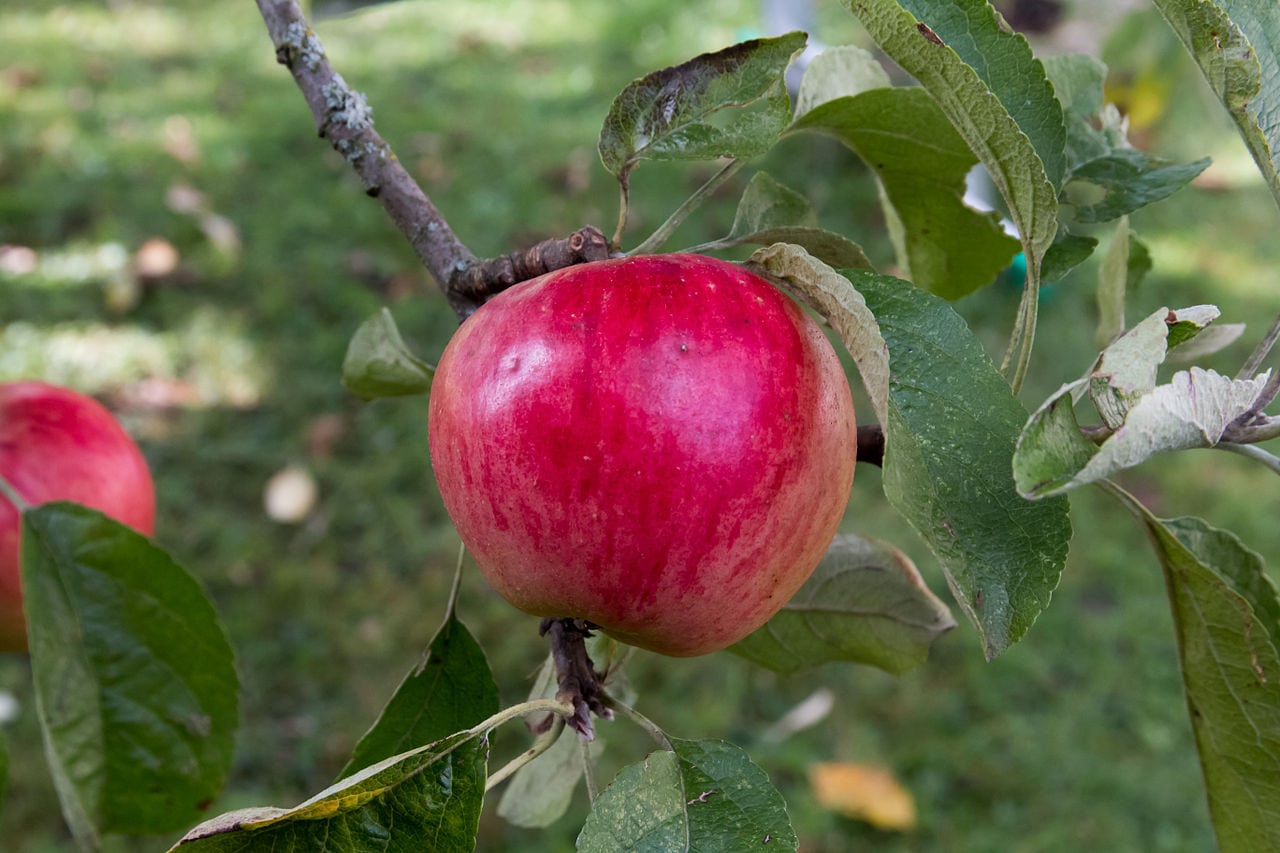What Are Akane Apples: Learn About Akane Apple Care And Uses


Akane is a very appealing Japanese variety of apples that is prized for its disease resistance, crisp flavor, and early ripening. It is also quite cold hardy and attractive. If you are looking for a cultivar that can stand up to disease and extend your harvesting period, this is the apple for you. Keep reading to learn more about Akane apple care and Akane growing requirements.
What are Akane Apples?
Akane apples originate from Japan, where they were developed by the Morika Experimental Station sometime in the first half of the 20th century, as a cross between Jonathan and Worcester Pearmain. They were introduced to the United States in 1937. The height of Akane trees tends to vary, though they are often grown on dwarf rootstocks that reach a height of 8 to 16 feet (2.5 to 5 m.) at maturity. Their fruits are mostly red with some green to brown russeting. They are medium in size and a nice round to conical shape. The flesh inside is white and very crisp and fresh with a good amount of sweetness. The apples are best for fresh eating rather than cooking. They do not store particularly well, and the flesh can start to become mushy if the weather gets too hot.
How to Grow Akane Apples
Growing Akane apples is pretty rewarding, as apple varieties go. The trees are moderately resistant to several common apple diseases, including powdery mildew, fire blight, and cedar apple rust. They are also quite resistant to apple scab. The trees perform well in a variety of climates. They are cold hardy down to -30 F. (-34 C.), but they also grow well in warm zones. Akane apple trees are quick to bear fruit, usually producing within three years. They are also prized for their early ripening and harvest, which usually occurs in late summer.
Gardening tips, videos, info and more delivered right to your inbox!
Sign up for the Gardening Know How newsletter today and receive a free copy of our e-book "How to Grow Delicious Tomatoes".

The only child of a horticulturist and an English teacher, Liz Baessler was destined to become a gardening editor. She has been with Gardening Know how since 2015, and a Senior Editor since 2020. She holds a BA in English from Brandeis University and an MA in English from the University of Geneva, Switzerland. After years of gardening in containers and community garden plots, she finally has a backyard of her own, which she is systematically filling with vegetables and flowers.
-
 Try The Trend – Turn Any Bed Into A Keyhole Garden With This Clever In-Ground Composter
Try The Trend – Turn Any Bed Into A Keyhole Garden With This Clever In-Ground ComposterKeyhole gardening is an efficient and sustainable practice that saves space. Get started on this DIY project quickly and easily with an in-ground composter.
By Bonnie L. Grant
-
 4 Superfast Composting Methods: Turn Waste Into Garden Gold In 30 Days Or Less
4 Superfast Composting Methods: Turn Waste Into Garden Gold In 30 Days Or LessTry the fastest composting methods to turbocharge your pile and transform kitchen scraps and garden waste into finished compost in just a few weeks.
By Mary Ellen Ellis